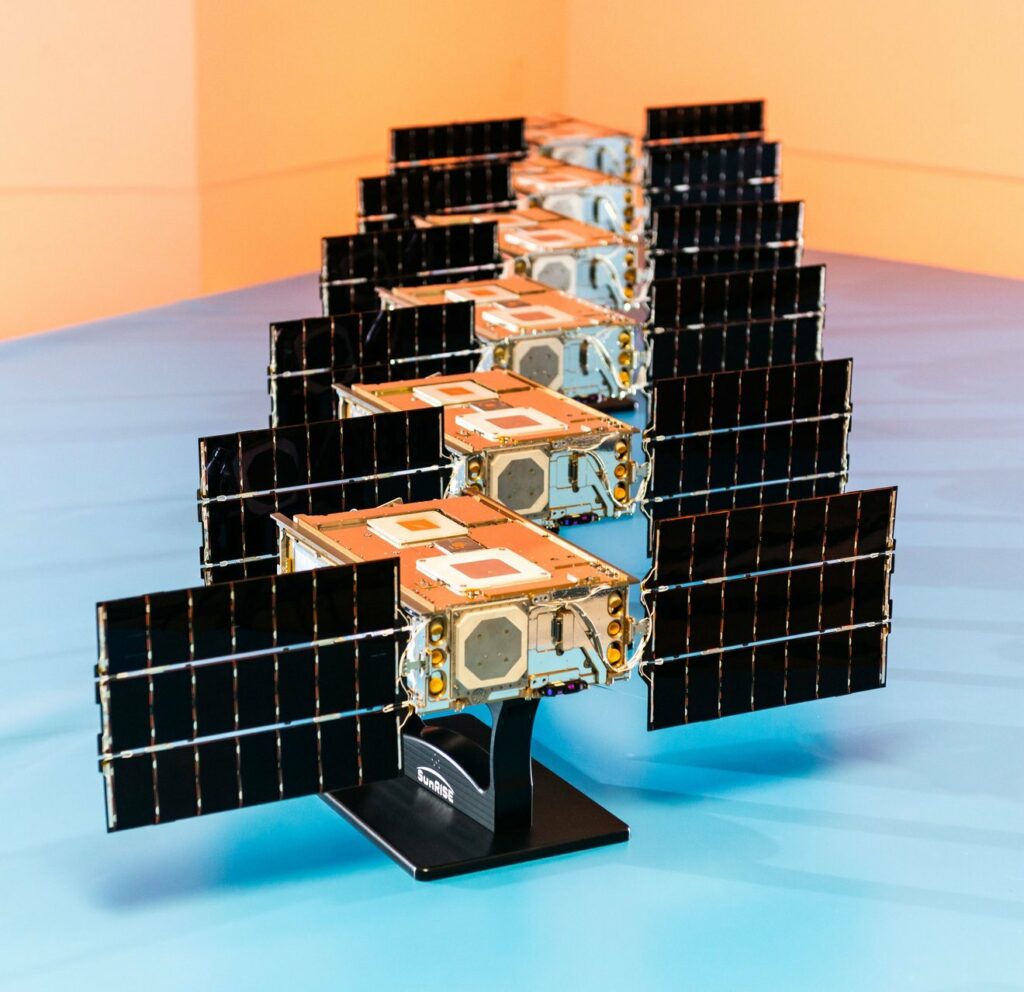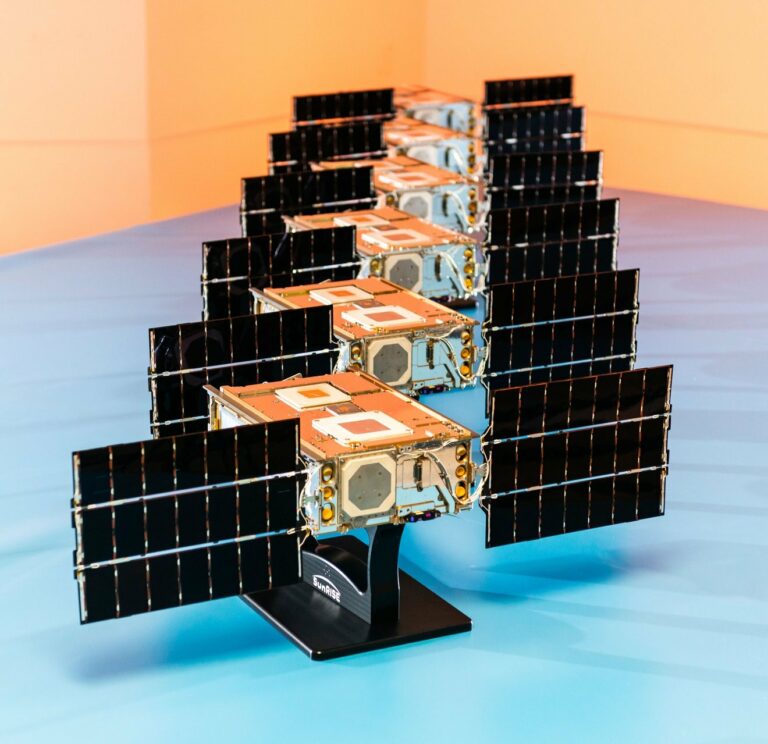NASA’s Set of Six Mini-Satellites Prepared for Their Time in the Sun
While most NASA missions typically involve a single spacecraft or occasionally a few, the Sun Radio Interferometer Space Experiment (SunRISE) distinguishes itself by deploying a set of six identical mini-satellites, each about the size of a cereal box. Construction of these small satellites has been successfully completed this month, and they will now undergo storage until the final testing phase and their scheduled launch into space. SunRISE is set to ride as a rideshare on a United Launch Alliance Vulcan rocket, sponsored by the United States Space Force (USSF)’s Space Systems Command (SSC).
Once in orbit, these six SmallSats will collaborate, functioning as a collective radio antenna in space. The primary objective of the mission is to investigate the physics of solar atmospheric explosions, aiming to glean insights that may eventually contribute to the protection of astronauts and space equipment from the impact of accelerated particle showers.

“This marks a significant milestone for all those involved in the SunRISE project,” expressed Jim Lux, the SunRISE project manager at NASA’s Jet Propulsion Laboratory in Southern California, overseeing the mission for the agency. “Encountering challenges is par for the course when pioneering new endeavors, particularly when dealing with small and compact space vehicles. Fortunately, our cohesive and efficient team spans multiple institutions and companies. I eagerly anticipate the moment when we capture the first images of the sun in these radio wavelengths.”
Monitoring solar radio bursts
Though small in size, the six satellites are tasked with a significant mission: examining solar radio bursts, the emission of radio waves in the sun’s outer atmosphere. These bursts originate from electrons accelerated in the sun’s atmosphere during energetic occurrences such as coronal mass ejections and solar flares. The particles accelerated by these events pose a threat to spacecraft electronics, including communication satellites in Earth orbit, and present a health hazard to astronauts.
There are still substantial uncertainties about the creation and interconnection of solar radio bursts, coronal mass ejections, and solar flares. SunRISE aims to unravel this intricate puzzle, potentially providing insights that could contribute to predicting when the energetic particles from coronal mass ejections and solar flares are likely to impact Earth. Ground-based monitoring is impractical for this purpose, as Earth’s atmosphere obstructs the radio wavelengths primarily emitted by solar radio bursts. To facilitate space-based monitoring, scientists require a radio telescope larger than any previously deployed in space, and this is where SunRISE plays a crucial role.
To observe solar radio events, the SmallSats will fly approximately 6 miles (10 kilometers) apart, each equipped with four radio antennas extending 10 feet (2.5 meters). Mission scientists and engineers will meticulously track the satellites’ relative positions and precisely measure when each one detects a specific event. The collected information will then be amalgamated into a unified data stream, generating images of the sun through a technique known as interferometry, providing scientists with a unique perspective. “Some missions incorporate multiple scientific instruments on a single spacecraft, whereas we utilize multiple small satellites to function as a single instrument,” highlighted Andrew Romero-Wolf, the deputy project scientist for SunRISE at JPL.
This article is republished from PhysORG under a Creative Commons license. Read the original article.
Do not forget to share your opinion with us to provide you with the best posts !




0 Comments